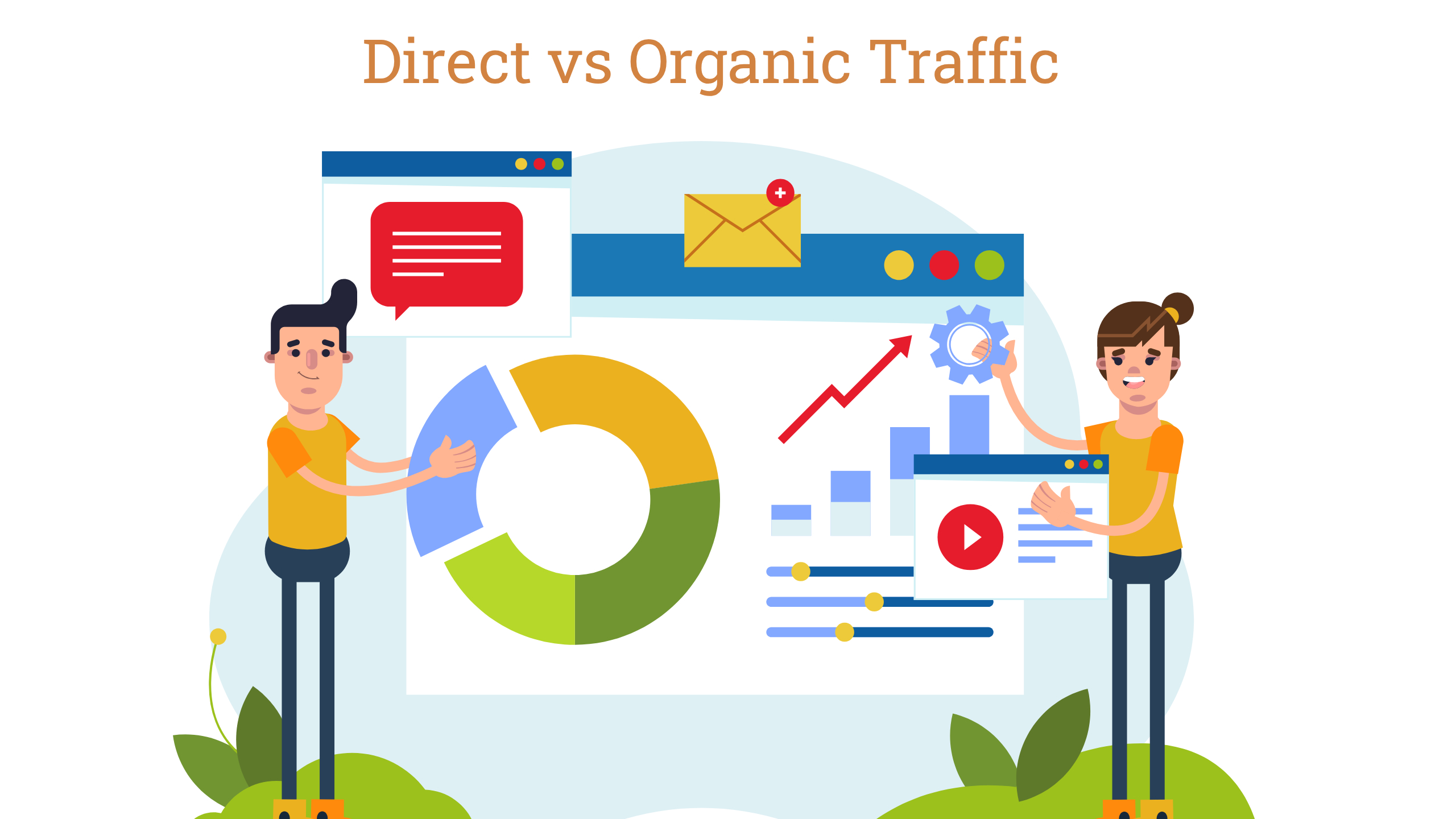Website growth depends on more than just numbers. The source of your visitors makes a big difference, and that’s why marketers often compare direct traffic and organic traffic to see which drives better results. The real question is: where should you invest more of your budget? Let’s break it down in simple terms.
What is Direct Traffic?
Direct traffic happens when someone types your website URL directly into their browser or clicks on a bookmark. This means they are already aware of your brand.
Think of it as a customer walking straight into your store because they trust you and remember your name. Direct traffic reflects brand awareness, loyalty, and recognition.
Ways to boost direct traffic:
- Strong branding and a memorable domain name
- Offline promotions like business cards, flyers, or billboards
- Consistent email marketing campaigns
- Creating a user experience that makes people want to return
Direct traffic is a sign that your brand has a strong identity. But building this type of traffic often requires long-term investment in branding and customer trust.
What is Organic Traffic?
Organic traffic drives visitors to your website by connecting them through search engines such as Google, Bing, and others. When someone searches for “best SEO tools” or “affordable PPC services” and clicks on your website in the results, that’s organic traffic.
It’s like having a steady stream of new people walking into your store after seeing a signboard on the street. Organic traffic is driven by SEO strategy, helpful content, and keyword optimization.
Ways to grow organic traffic:
- Publishing SEO-friendly blogs and guides
- Using the right keywords in your content
- Building backlinks from trusted websites
- Keeping your site fast and mobile-friendly
The best part? Unlike paid ads, organic traffic keeps working for you even when your ad budget is paused. Once you rank on Google, you can enjoy consistent visitors for months or even years.
Which One Gives Better ROI?
This depends on your business stage and goals:
- Organic traffic is great for growth. It brings in fresh visitors who are actively searching for your products or services. It’s cost-effective and scalable, making it a smart choice for long-term results.
- Direct traffic shows brand strength. It means people remember you, trust you, and want to come back. While harder to scale, these visitors are often your most loyal customers and have higher chances of converting.
In simple words: Organic traffic helps you grow your reach, while direct traffic shows you’ve built a strong brand. Both are valuable, but they work in different ways.
Where Should You Spend More of Your Budget?
If you are just starting out or want to increase your online visibility, focus more on organic traffic through SEO and content marketing. It offers you long-term results and builds authority in your industry.
If your brand is already well-known, investing in strategies that drive direct traffic (like branding campaigns, newsletters, or loyalty programs) can help you keep customers engaged and coming back.
The smartest approach? A balanced mix. Spend a major part of your budget on SEO and organic content while reserving some funds for branding and customer retention. This way, you’ll attract new visitors and keep your loyal audience close.
Final Thoughts
When deciding between direct vs organic traffic, don’t think of it as one versus the other. Instead, see them as partners in your digital marketing journey.
- Organic traffic builds your online visibility and brings in new people.
- Direct traffic proves your brand has trust and staying power.
For the best results, track your website traffic with tools like Google Analytics, see what works, and adjust your digital marketing budget accordingly. With the right balance, you’ll not only grow your traffic but also turn more visitors into paying customers.
Ready to maximize your traffic strategy? Start by investing in SEO-driven organic growth, while building a brand that people won’t forget.

